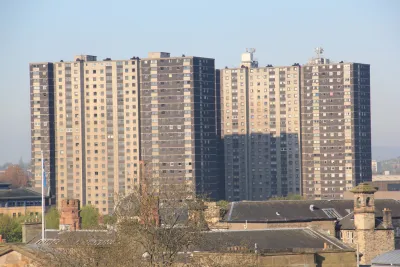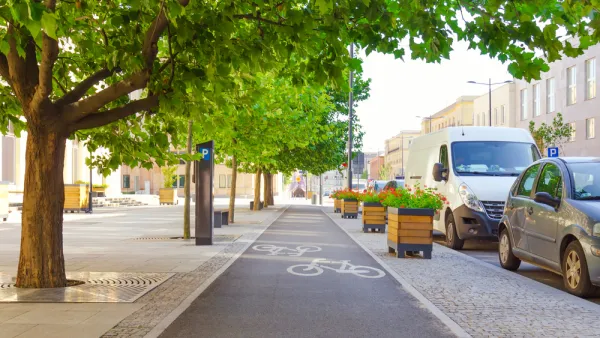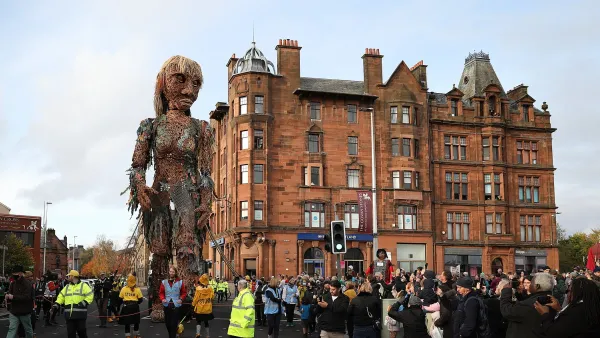Decades of poor urban planning and policy decisions have contributed to "the Glasgow Effect," which has seen higher rates of mortality for Glaswegians compared to similar de-industrialized cities.

Researchers have tied the high rates of mortality for Glaswegians under the age of 65 to decades of poor planning and policy decisions, reports Karin Goodwin of The Guardian. "The Glasgow Effect," as labelled by researchers, has seen a 30 percent higher risk of dying below the age of 65 from the typical causes of cancer and heart disease, as well as the despair diseases of alcoholism and suicide.
The cause of the higher rate of mortality among residents of Glasgow has roots in the policy and planning decisions from the '60s, '70s, and '80s that shifted portions of the population—primarily younger workers and their families—to new towns on the outskirts of the city leaving the poor and elderly in Glasgow's center in high rise housing and peripheral estates.
The schemes of modern Glasgow are often desolate and surrounded by vacant land: 91% of people in Springburn (pdf)– in the north of the city – live 500 metres from vacant or derelict land; Maryhill – in the west – it’s 85%; and in Shettleston – the east – 74%.
This could be having serious effects; earlier this year a statistical analysis of Glasgow (pdf) by Juliana Maantay and Andrew Maroko of City University of New York (CUNY), found a link between poor mental health and the proximity to vacant or derelict link. They also found the effect was lessened when communities had a role in the urban planning process.
Goodwin reports that the tide may be turning in terms of political will to fix the planning mistakes of the past, thanks to new leadership from the Scottish National Party (SNP). However, challenges remain to actually fund the change required to turn around Glasgow's high mortality rate.
FULL STORY: The Glasgow effect: 'We die young here - but you just get on with it'

Analysis: Cybertruck Fatality Rate Far Exceeds That of Ford Pinto
The Tesla Cybertruck was recalled seven times last year.

National Parks Layoffs Will Cause Communities to Lose Billions
Thousands of essential park workers were laid off this week, just before the busy spring break season.

Retro-silient?: America’s First “Eco-burb,” The Woodlands Turns 50
A master-planned community north of Houston offers lessons on green infrastructure and resilient design, but falls short of its founder’s lofty affordability and walkability goals.

Test News Post 1
This is a summary

Analysis: Cybertruck Fatality Rate Far Exceeds That of Ford Pinto
The Tesla Cybertruck was recalled seven times last year.

Test News Headline 46
Test for the image on the front page.
Urban Design for Planners 1: Software Tools
This six-course series explores essential urban design concepts using open source software and equips planners with the tools they need to participate fully in the urban design process.
Planning for Universal Design
Learn the tools for implementing Universal Design in planning regulations.
EMC Planning Group, Inc.
Planetizen
Planetizen
Mpact (formerly Rail~Volution)
Great Falls Development Authority, Inc.
HUDs Office of Policy Development and Research
NYU Wagner Graduate School of Public Service




























